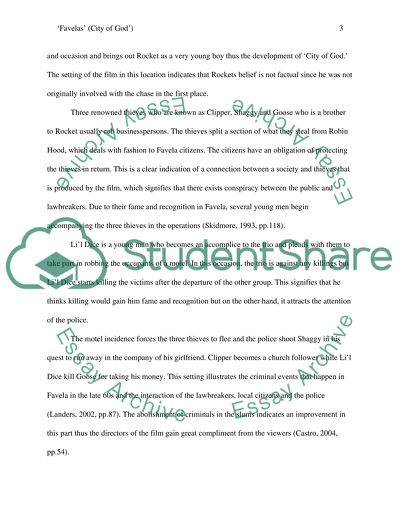Cite this document
(“'Favelas' ('City of God') Essay Example | Topics and Well Written Essays - 2000 words”, n.d.)
Retrieved from https://studentshare.org/visual-arts-film-studies/1449328-fernando-meirelles-has-been-criticized-for
Retrieved from https://studentshare.org/visual-arts-film-studies/1449328-fernando-meirelles-has-been-criticized-for
('Favelas' ('City of God') Essay Example | Topics and Well Written Essays - 2000 Words)
https://studentshare.org/visual-arts-film-studies/1449328-fernando-meirelles-has-been-criticized-for.
https://studentshare.org/visual-arts-film-studies/1449328-fernando-meirelles-has-been-criticized-for.
“'Favelas' ('City of God') Essay Example | Topics and Well Written Essays - 2000 Words”, n.d. https://studentshare.org/visual-arts-film-studies/1449328-fernando-meirelles-has-been-criticized-for.


